Grape Kush
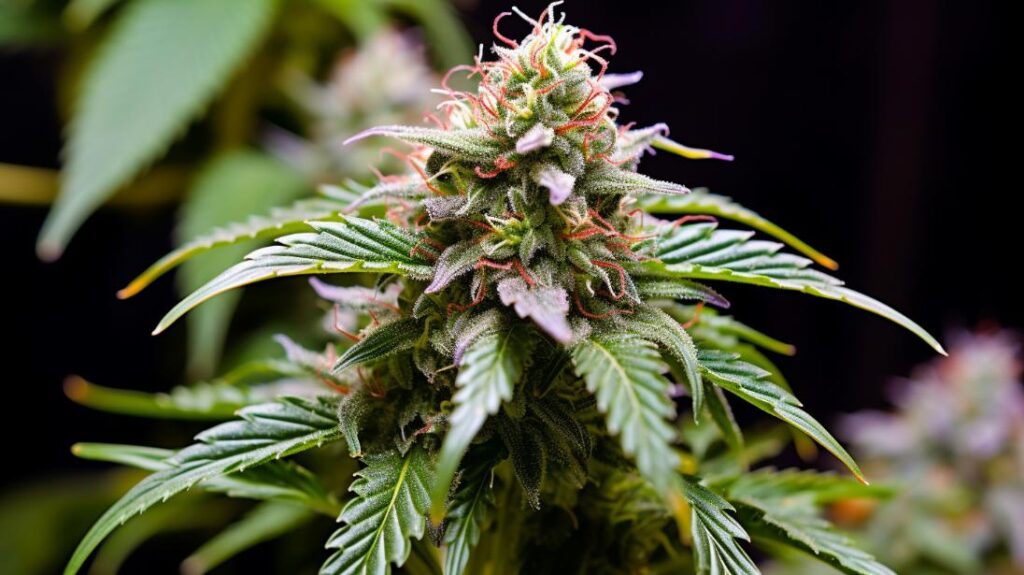
The Grape Kush strain, an intriguing indica-dominant hybrid, marries the distinctive flavors of grape and berry with a complex genetic lineage, leading to a multifaceted cannabis experience that appeals to both recreational and medicinal users. Its ancestry—a cross between Grape Romulan and Pre-98 Bubba—bestows upon it a rich terpene profile and a set of effects that are as nuanced as they are potent.
While the strain is celebrated for its capacity to induce relaxation, alleviate stress, and provoke euphoria, there is much more to its story, including its specific THC/CBD content, medical applications, and its place within the broader context of cannabis research and culture.
Genetic Lineage
Grape Kush, a hybrid strain boasting a complex genetic lineage, is derived from the crossbreeding of Grape Romulan and Pre-98 Bubba, showcasing a 60% sativa and 40% indica composition. This meticulously crafted blend results in a strain that leans towards the sativa side, offering users a unique combination of the relaxing indica effects with the uplifting and euphoric sensations typically associated with sativa strains. Its genetic makeup is important for medical users seeking specific therapeutic benefits, as the balanced hybrid nature of Grape Kush can address a wide array of symptoms without leaning too heavily towards sedation or stimulation.
The parent strains, Grape Romulan and Pre-98 Bubba, contribute to Grape Kush’s notable characteristics, such as its deep purple hues, distinct spicy and grape aroma, and a flavor profile rich in grape and berry notes. This heritage not only makes Grape Kush a sensory delight but also enhances its appeal among patients and enthusiasts alike. For those exploring strains with similar effects—balancing relaxation with mental clarity—Grape Kush serves as a prime example of how hybrid strains can be engineered for both recreational enjoyment and medical application, demonstrating the importance of genetic lineage in achieving desired outcomes.
THC/CBD Content
Understanding the specific cannabinoid profile of Grape Kush, particularly its THC and CBD content, is key to comprehending its therapeutic potential and psychoactive properties. This strain is notable for its skewed THC:CBD ratio, which heavily favors THC, thereby contributing greatly to its potency and the effects it can induce in users. Grape Kush’s THC levels typically range from 13% to 18%, indicating a potential for moderate to strong psychoactive outcomes depending on the individual’s tolerance and the specific phenotype encountered. In contrast, its CBD content is markedly lower, which is a common characteristic among strains that prioritize psychoactive strength over non-psychoactive therapeutic effects.
To draw the audience in and keep them interested, consider the following facts:
- Grape Kush’s THC content typically spans from 13% to 18%, offering a versatile range of potency.
- The THC:CBD ratio is mainly THC-heavy, enhancing its psychoactive capabilities.
- Variations in THC concentration can occur, influenced by the plant’s phenotype and growing conditions, adding a level of complexity to its cultivation and consumption.
In essence, Grape Kush’s cannabinoid profile, with its emphasis on THC, positions it as a strain with notable psychoactive potential, appealing particularly to users seeking stronger effects and highlighting the importance of understanding cannabinoid ratios in predicting strain effects.
Terpene Profile
The terpene profile of the Grape Kush strain, characterized by high concentrations of myrcene, caryophyllene, and limonene, plays a pivotal role in defining its therapeutic efficacy and aromatic appeal. Myrcene, the most abundant terpene in this profile, is renowned for its sedative effects, potentially enhancing relaxation and promoting a soothing experience. This terpene’s presence is critical in defining Grape Kush’s calming attributes.
Caryophyllene, on the other hand, offers a spicy and peppery note to the fragrance profile, alongside potential anti-inflammatory and analgesic benefits, contributing to the strain’s complex therapeutic potential. Limonene adds a citrusy aroma, which may aid in elevating mood and relieving stress, rounding off the strain’s aromatic and therapeutic profile. This unique synergy of terpenes not only contributes to Grape Kush’s distinct grape and berry flavors but also underscores its multifaceted health benefits.
| Terpene | Aroma | Potential Effects |
|---|---|---|
| Myrcene | Earthy, musky | Sedative, promotes relaxation |
| Caryophyllene | Spicy, peppery | Anti-inflammatory, analgesic |
| Limonene | Citrusy | Mood-enhancing, stress-relieving |
This table underscores the significance of each terpene in Grape Kush’s profile, emphasizing their individual contributions to the strain’s overall appeal and therapeutic value.
Effects
Exploring the terpene profile of the Grape Kush strain reveals its unique aromatic and therapeutic properties, setting the stage to examine its diverse effects on users. Reports from 173 individuals have highlighted the primary effects of feeling sleepy, hungry, and euphoric, which are significant markers of the strain’s impact on the body and mind. The presence of specific terpenes is believed to contribute to these sensations, drawing a connection to strains with similar terpenes that may offer comparable experiences.
However, it’s important to acknowledge the common negative effects, which include headaches, dry mouth, and in some cases, paranoia. These adverse reactions underscore the importance of moderation and seeking professional advice, especially for new users or those considering the Grape Kush strain for therapeutic purposes.
To keep the audience engaged, let’s highlight:
- The importance of understanding individual reactions to different terpene profiles
- The balance between desired and adverse effects, emphasizing the need for informed use
- The comparison with strains sharing similar terpenes, offering insights into potential alternatives or complementary experiences
Medical Uses
Grape Kush strain’s reported efficacy in mitigating symptoms related to stress, anxiety, and depression underscores its potential therapeutic applications, warranting a closer examination. According to user feedback, approximately 39% of individuals have found Grape Kush to provide significant stress relief. This suggests a notable anxiolytic property inherent in the strain, potentially attributable to its unique cannabinoid and terpene profile.
Additionally, about 29% of users report that Grape Kush assists in managing symptoms of anxiety, indicating its potential utility in the treatment of anxiety disorders. Additionally, 25% of users have experienced relief from depressive symptoms, suggesting that Grape Kush may have antidepressant-like effects.
These findings, derived from user experiences, highlight the strain’s multifaceted therapeutic potential. However, it is paramount to emphasize that these benefits are based on subjective reports and not on clinical trials or professional medical advice. Individuals considering Grape Kush for its medical uses should proceed with caution and consult a healthcare professional to guarantee safety and appropriateness for their specific health conditions.
This consultation is vital to navigating the complexities of cannabis treatment and ensuring that it aligns with individual health needs and medical history.
Flavor and Aroma
Beyond its medical applications, the Grape Kush strain offers a distinctive sensory experience, characterized by its unique flavor profile that encompasses notes of grape, berry, and sweetness. This flavor complexity is not accidental but a direct result of its genetic lineage, combining the qualities of Grape Romulan and Pre-98 Bubba to produce a truly remarkable taste experience. The aroma complements the flavor profile, presenting a sophisticated blend of spicy hashish with unmistakable grape undertones, creating an olfactory experience that is as intriguing as it is pleasant.
The flavor and aroma profile of Grape Kush make it particularly appealing for those who appreciate the nuances of cannabis taste and scent. To further elucidate:
- Grape and Berry Notes: The dominant grape and berry flavors provide a sweet, fruity base that is both invigorating and indulgent.
- Spicy Hashish Aroma: The spicy hashish aroma adds depth and complexity to the overall sensory experience, invoking a sense of exotic intrigue.
- Sweetness: The underlying sweetness ties the flavor profile together, offering a harmonious balance to the fruity and spicy elements.
This combination of flavor and aroma makes Grape Kush a standout strain for connoisseurs and casual users alike, offering a rich, multi-layered experience that goes beyond the traditional cannabis encounter.
Appearance
The appearance of the Grape Kush strain is distinguished by its visually striking deep purple hues and the presence of brown hairs that contrast vividly against the backdrop of its foliage. This visual appeal is not merely a matter of aesthetics; it signifies the unique genetic heritage of the strain, a hybrid of Grape Romulan and Pre-98 Bubba, which marries a 60% sativa dominance with a 40% indica lineage. The deep purple coloring is a hallmark of the strain’s indica roots, while the sativa aspect is reflected in the structure and density of the buds.
In the cannabis community, the appearance of strains is often indicative of their potency and aromatic profile. Grape Kush is no exception, with its rich coloration hinting at the complex aroma and flavor profile it possesses— a tantalizing mix of spicy hashish and sweet grape scents. This aromatic bouquet is not only a pleasure for the olfactory senses but also suggests the presence of diverse cannabinoids and terpenes, contributing to the strain’s sought-after sativa-leaning high.
Technical analysis of Grape Kush’s appearance reveals a carefully balanced interplay between its sativa and indica components, making it a visually appealing and aromatic choice among cannabis strains.
Grow Information
Cultivators seeking efficient growth cycles and substantial yields will find Grape Kush to be a perfect choice, given its high-quality, resilient nature and fast maturity. This hybrid strain, a blend of Grape Romulan and Pre-98 Bubba, combines the best of both worlds, offering growers a sativa-leaning high with the robustness of its indica heritage. With a flowering time of merely 8-9 weeks, Grape Kush stands out as an exceptionally fast-maturing option for those keen to move from planting to harvest without lengthy delays.
Key grow information highlights include:
- Indoor Yield: Approximately 400g/m^2, positioning Grape Kush as a high-yield strain for indoor cultivators seeking productive harvests.
- Flowering Time: A swift turnaround with a flowering period of 8-9 weeks, facilitating quick cycles for continuous production.
- Outdoor Harvest: Ready for harvest in October, offering outdoor growers a viable and rewarding option for their cultivation efforts.
The hybrid strain’s adaptability to both indoor and outdoor environments, coupled with its efficient growth cycle, makes Grape Kush an attractive option for growers at various experience levels. Its resilience and bountiful bud production further solidify its standing as a favored choice among cultivators.
Adverse Effects
While Grape Kush offers remarkable benefits for growers in terms of yield and growth cycle efficiency, it is also important to take into account the adverse effects reported by users, including headaches, dry mouth, and feelings of paranoia. A technical analysis of these adverse effects reveals a pattern consistent with the use of cannabis strains with potent THC levels. Users frequently report dry eyes and dizziness, alongside the previously mentioned effects, which suggest a need for cautious consumption practices.
Further examination of user feedback indicates that while some people say it helps with various conditions, the incidence of headaches as a negative reaction cannot be overlooked. This particular adverse effect might be attributed to the strain’s specific cannabinoid profile, which, despite its therapeutic potentials, could induce pressure changes in susceptible individuals. Dry mouth, another commonly reported side effect, is indicative of the strain’s influence on the salivary glands, a phenomenon well-documented in cannabis research.
The reported feelings of paranoia underscore the importance of dosage and the user’s mental state when using Grape Kush. These adverse effects highlight the complex interplay between the strain’s chemical composition and the user’s physiological and psychological response, necessitating further study and cautious use.
Comparisons with Similar Strains
Exploring the nuanced differences between Grape Kush and its closely related counterpart, Grape Krush, reveals a fascinating comparison regarding genetic composition, effects, and flavor profiles. While both strains share a grape name and exhibit similar effects to Grape enthusiasts, their origins and the resulting experiences diverge greatly.
Grape Kush, a balanced hybrid, is crafted from Grape Romulan and Pre-98 Bubba, offering a unique blend of 60% sativa and 40% indica genetics. This combination provides users with a mainly sativa-leaning high, characterized by uplifting and euphoric sensations. In contrast, Grape Krush, with its indica-heavy lineage derived from Blueberry parents, leans more towards delivering a relaxing, sleepy, and appetite-inducing experience, thanks to its indica dominance.
To better understand these distinctions:
- Genetic Composition: Grape Kush’s sativa/indica ratio contrasts with Grape Krush’s indica-heavy profile.
- Effects: Users seeking an energizing effect might gravitate towards Grape Kush, while those in search of relaxation might find strains with similar characteristics to Grape Krush more appealing.
- Flavor Profiles: Grape Kush offers a sweet grape and berry taste, whereas Grape Krush introduces a complex palette of grape, lavender, and spicy/herbal notes.
This comparison underscores the importance of understanding strain genetics and effects when choosing between Grape Kush and Grape Krush.
Research and Studies
Building on the comparative analysis between Grape Kush and its counterparts, it is pertinent to examine the scientific research and empirical studies that shed light on this strain’s unique properties and effects. Research reveals that Grape Kush, a hybrid of Grape Romulan and Pre-98 Bubba, possesses a sativa-leaning high, distinguishing it from other strains with similar genetic backgrounds. The specific combination of its parent strains contributes to its remarkable effects and aromatic profile.
Empirical studies, including feedback from 173 individuals, highlight Grape Kush’s therapeutic potential in alleviating stress, anxiety, and depression. Such findings are critical for understanding the strain’s applicability in medical contexts, particularly in mental health treatment. The reported effects of sleepiness, hunger, and euphoria, alongside the less desirable outcomes like headaches and dry mouth, provide a detailed overview of its impact on users. These effects are underpinned by its distinct grape, berry, and sweet flavors, which enhance its appeal and user experience.
This body of research and user testimonials underscores the importance of scientific inquiry into the Grape Kush strain. Analyzing its effects and flavors not only enriches our understanding of its therapeutic potential but also aids in refining its application for specific user needs.
History and Origin
The hybrid strain Grape Kush, a result of crossing Grape Romulan with Pre-98 Bubba, traces its origins to an innovative breeding effort aimed at combining distinct flavor profiles and effects. This strain boasts a genetic makeup of 60% sativa and 40% indica, providing a primarily sativa-leaning high that is both energizing and mentally stimulating. The meticulous selection of Grape Romulan and Pre-98 Bubba as parent strains was driven by the goal to harness the unique aromatic and visual traits of Grape Romulan, alongside the robust growth characteristics and soothing effects of Pre-98 Bubba.
- Genetic Makeup: 60% Sativa / 40% Indica, offering a balanced yet sativa-dominant experience.
- Distinct Aroma: A unique blend of spicy hashish and grape scents, making it a memorable choice for both connoisseurs and casual users.
- High Yields: Capable of producing around 400g/m² indoors with a flowering time of 8-9 weeks, appealing greatly to growers looking for efficiency and productivity.
Grape Kush’s popularity is not solely based on its sensory appeal but also on its practical value. Its resilience and fast growth rate, coupled with high yields, make it a top pick for cultivation, providing both recreational and medicinal users with high-quality cannabis.
Frequently Asked Questions
Is Grape Kush a Indica or Sativa?
Regarding the classification of cannabis strains, it’s essential to analyze genetics, cultivation techniques, and flavor profile. Grape Kush exhibits a hybrid structure with 60% sativa and 40% indica genetics, offering a sativa-dominant experience.
Is Grape Kush Good for Anxiety?
Evaluating anxiety relief methods, it’s noted that certain cannabis strains, due to their specific THC content and effects, can potentially offer benefits. Among these, Grape Kush has been highlighted for its anxiety-mitigating properties.
Is Grape Strain Indica or Sativa?
Exploring the grape genetics mystery, one finds grape strains exhibit varied indica or sativa dominance. A flavor profile exploration and cultivation difficulty discussion further reveal the complexity, highlighting the nuanced, hybrid nature of these strains.
Is Grape OG Sativa or Indica?
Grape OG, through genetics exploration, reveals a hybrid composition with a flavor profile blending both sativa and indica characteristics. Its cultivation difficulty assessment indicates a moderate challenge, showcasing its balanced genetic heritage and nuanced effects.

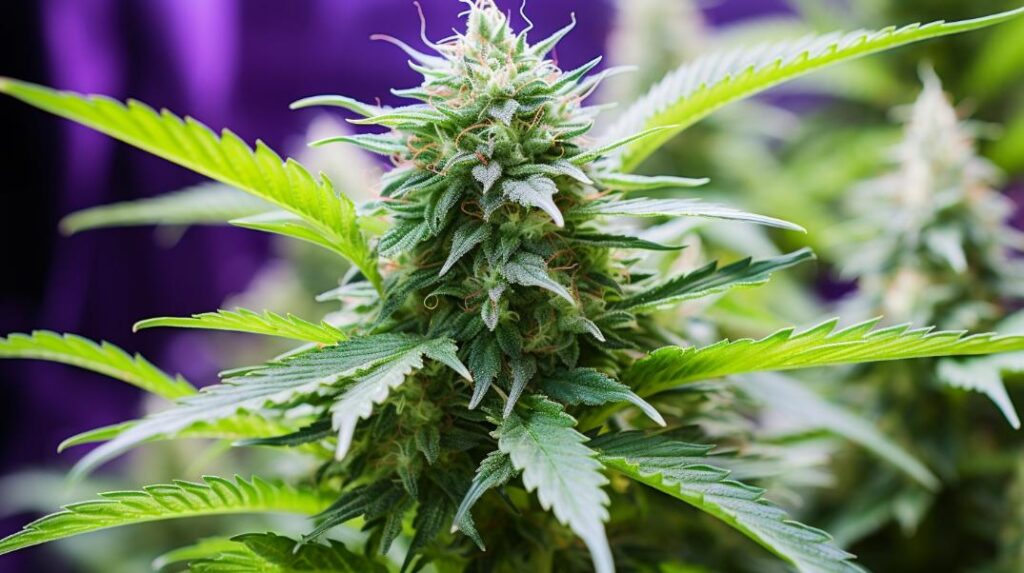
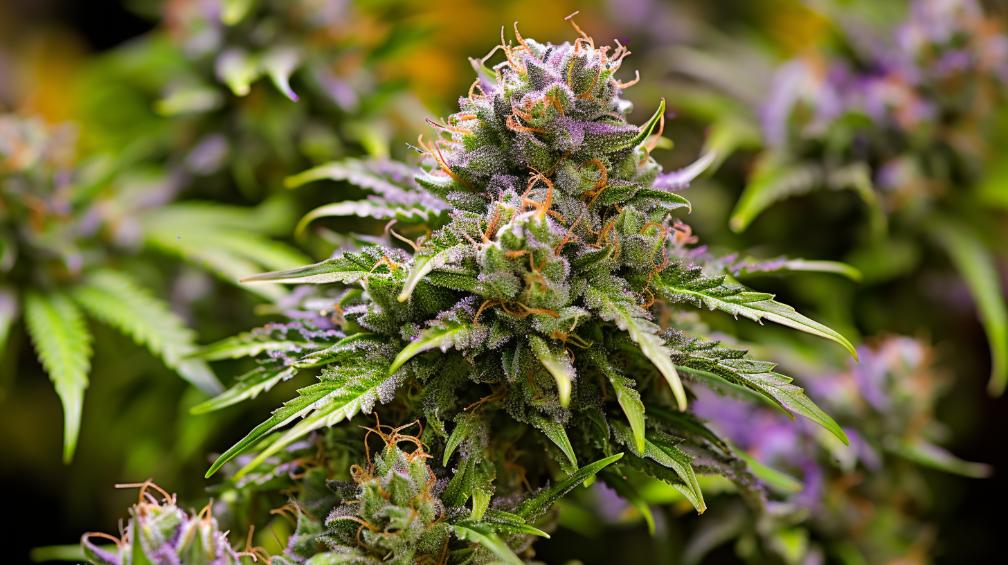
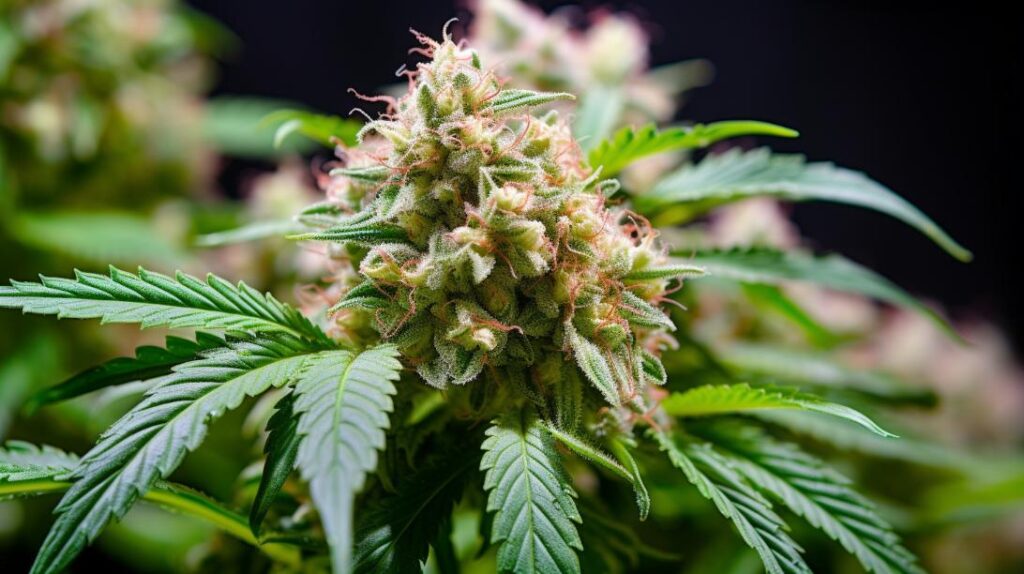
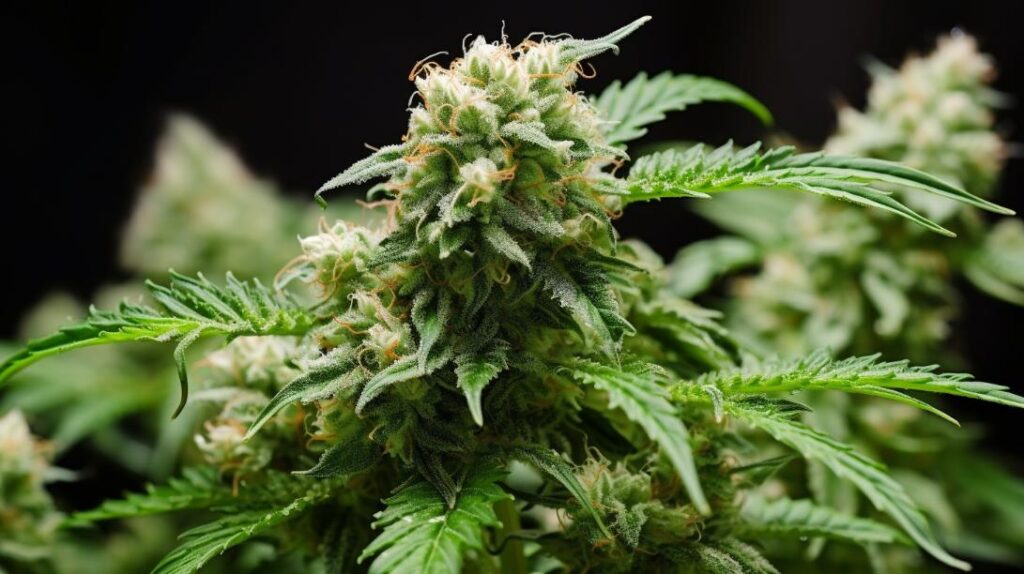
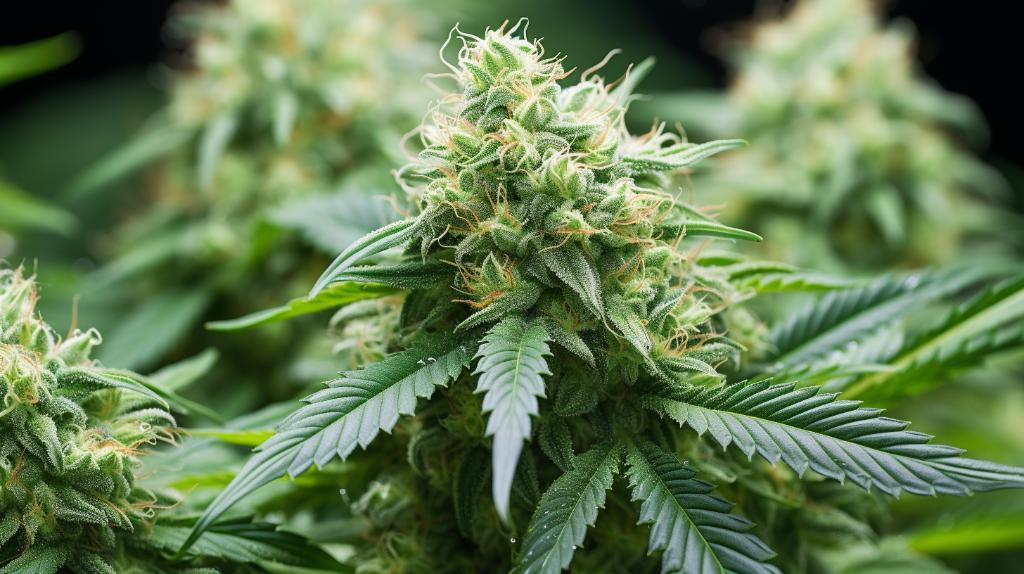

Responses